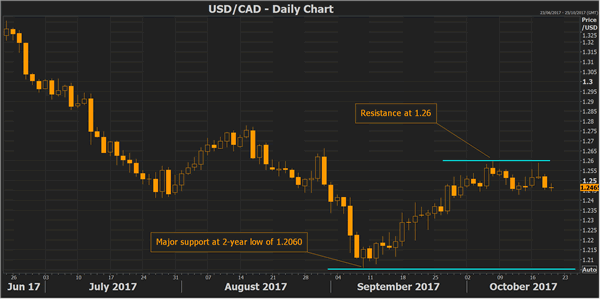Inflation and retail sales numbers out of Canada on Friday will be scrutinized for clues to a possible year-end rate hike by the Bank of Canada, following recent remarks from BoC Governor Stephen Poloz that suggested a pause after two consecutive hikes.
The Canadian dollar has rallied by over 7% against its US counterpart this year as growth in the country has exceeded expectations, prompting the central bank to raise rates by a total of 50 basis points to 1.00%. However, inflation remains subdued despite the strengthening economy. Headline CPI stood at 1.4% year-on-year in August and is expected to rise to 1.6% in September. The Bank of Canada’s core measure of inflation is even lower, standing at just 0.9% in August.
Retail sales on the other hand have been buoyant, reaching a 1½-year high of 7.8% y/y in August, helped by a steady decline in the number of people out of work. In July, retail sales grew by a bigger-than-expected 0.4% month-on-month and another solid month is forecast for August. Friday’s figures are expected to show August retail sales rising by 0.5% m/m.

The loonie should gain some support from the CPI and retail sales data, as it would likely reinforce expectations that more rate hikes are on the way. The Canadian currency has come under pressure this week on fears that the United States would pull out of NAFTA after a contentious round of talks for renegotiating the trade agreement. Its losses were halted at the support level of C$1.26 per US dollar.
A stronger-than-forecast set of figures could push the loonie back towards September’s two-year high of C$1.2060 per US dollar. A clearer picture on the probability of further rate hikes should emerge from next week’s BoC policy meeting on October 25. No change in rates is forecast at the October meeting but the December 6 meeting remains very much in play, with the market implied odds of a rate hike hovering just below 50%.













